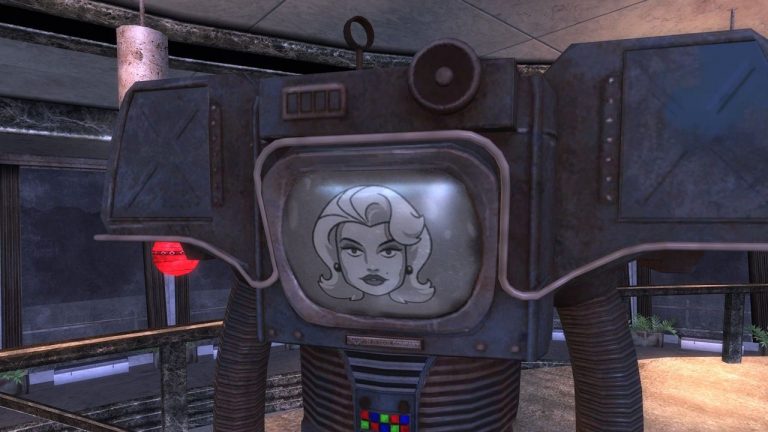PC gaming is incredibly adept at replicating the past, whether in the breakneck momentum of a boomer shooter, or the flickering polygons of a PS1 survival horror throwback. But one experience that’s particularly difficult to revive is the feeling of encountering a brand new arcade cabinet for the first time.
Imagine being a kid in the 1980s and slotting your first ever coin into Donkey Kong or Asteroids or Missile Command, hovering your fingers over the controls with no idea of what’s to come, no frame of reference for how this machine works. Gaming is so neatly categorised now, so heavily formalised in its genres and mechanics, that I find it difficult to imagine what that must have been like.
(Image credit: Pocket Moon Games)
At least, that’s how I felt until I encountered Wormhole, a virtual arcade simulacrum which has quickly become one of my favourite games of 2024. Developed by Canadian outfit Pocket Moon Games, Wormhole effectively captures that sense of frantic on-the-spot learning of first arcade encounters. More remarkably still, it achieves this while using one of the most familiar games in existence as its basis—Snake.
The fundamentals of Wormhole are Basically Just Snake. You control a segmented line of pixels as it darts automatically across the screen, devouring dots that add more segments to your serpentine juggernaut as they are consumed. If your snake bumps into its own tail, the game ends. Wormhole drapes a fancier theme over these rules—you’re a giant space worm and the dots you devour are planets—but otherwise it’ll be instantly recognisable to anyone who owned a Nokia phone in the early 2000s.
Familiar, that is, except for all the things Wormhole adds. The most important is an energy bar that depletes as your worm moves, which will trigger a game over if it’s empty for too long. Consuming planets refills the bar, but planets appear and disappear at random, meaning you can miss one and run out of energy before reaching the next. Fortunately for your monstrous devourer of worlds, space is dotted with handy wormholes that you can take a shortcut through.
(Image credit: Pocket Moon Games)
This space warping element is one of the key ways in how Wormhole resets your comprehension of Snake, as you have to wrap your mind around Portal-style movement in an arcade environment. Moreover, these wormholes also tend to shift around the level, while many levels have more than two wormholes in them, and you have to figure out which of them connect.
It’s like accidentally turning onto the wrong side of the motorway on your first driving lesson.
On top of this, Wormhole also throws random curveballs into levels with no warning or explanation. An Asteroids-style UFO that hovers around and runs away from you when you get near, what’s that about? A giant floating skull—what’s his deal? A big line of stars that cause the word “SUPERNOVA” to appear on screen if you collect them all. It sure looks rad, but what does it do?
To be clear, Wormhole isn’t some ingenious, cryptic masterpiece. It won’t take you too long to figure out the various effects each of these things have on the game. But the way they are introduced, combined with the speed that Wormhole plays at (levels often last less than thirty seconds) combine to provoke that sensory overload you want from a great arcade game. It’s like accidentally turning onto the wrong side of the motorway on your first driving lesson—there’s all this shit flying at you while you’re still trying to figure out how to shift through gears.
(Image credit: Pocket Moon Games)
Crucially, though, Wormhole’s novelty doesn’t just last as long as it takes for you to understand it. While not an enormously difficult game, it has a high skill ceiling, mainly facilitated by your worm’s special abilities. The default ability is a dash which propels your worm forward at a much higher pace than normal. This can be upgraded to let you smash right through planets without having to nibble on them first. Using this, you can pinball your worm around the level at terrifying speed, clinging on to your keyboard at the edge of control, like Paul Atreides atop one of Arrakis’ enormous annelids.
Wormhole conveys that feeling of being one wrong move away from losing another coin from your wallet. Further complementing this is the fact that Wormhole’s retro credentials are impeccable. The crunchy, 1-bit pixel graphics. The artificially curved central display designed to resemble a CRT screen. The flattened chiptune soundtrack. The way the game’s digitised announcer says “Wormhole” with all the vowels removed. One element that arguably runs counter to this is the swirling spiral backdrop, which probably would have melted any real ’80s arcade cabinet with all its moving curves. However, the hypnotic whirling of the spiral lends Wormhole a forbidden feeling, like it’s a cabinet somewhere in the dark recesses of the arcade, partially covered by a dust sheet, seemingly unnoticed by anyone except you.
(Image credit: Pocket Moon Games)
Wormhole does make a few concessions to modernity. The arcade-style points you score aren’t entirely arbitrary, accruing to unlock new special abilities for your worm, such as Yeehaw, which lets you shoot projectiles at planets from a distance. Levelling up also unlocks a bunch of different themes for the game, such as an Apple II green, a bubblegum pink or that fuzzy tan colour you see on TVs in Fallout. Don’t expect the same layers to the upgrade system as you’d get in, say, Hades or Balatro, however. Indeed, one of the few complaints I have about Wormhole is that there are only three different worm abilities, and I think there’s a lot of potential left untapped by allowing players to really mix things up.
Nonetheless, with 100 levels to chomp through, which gradually add new wrinkles like bumpers you need to avoid, or a barrier that splits the level in two, Wormhole will keep you occupied for a good few hours. It’s a smart, accomplished game that, like Balatro or Derek Yu’s NES-inspired mixtape UFO 50, takes a familiar archetype and reinvents it to feel new and surprising.





